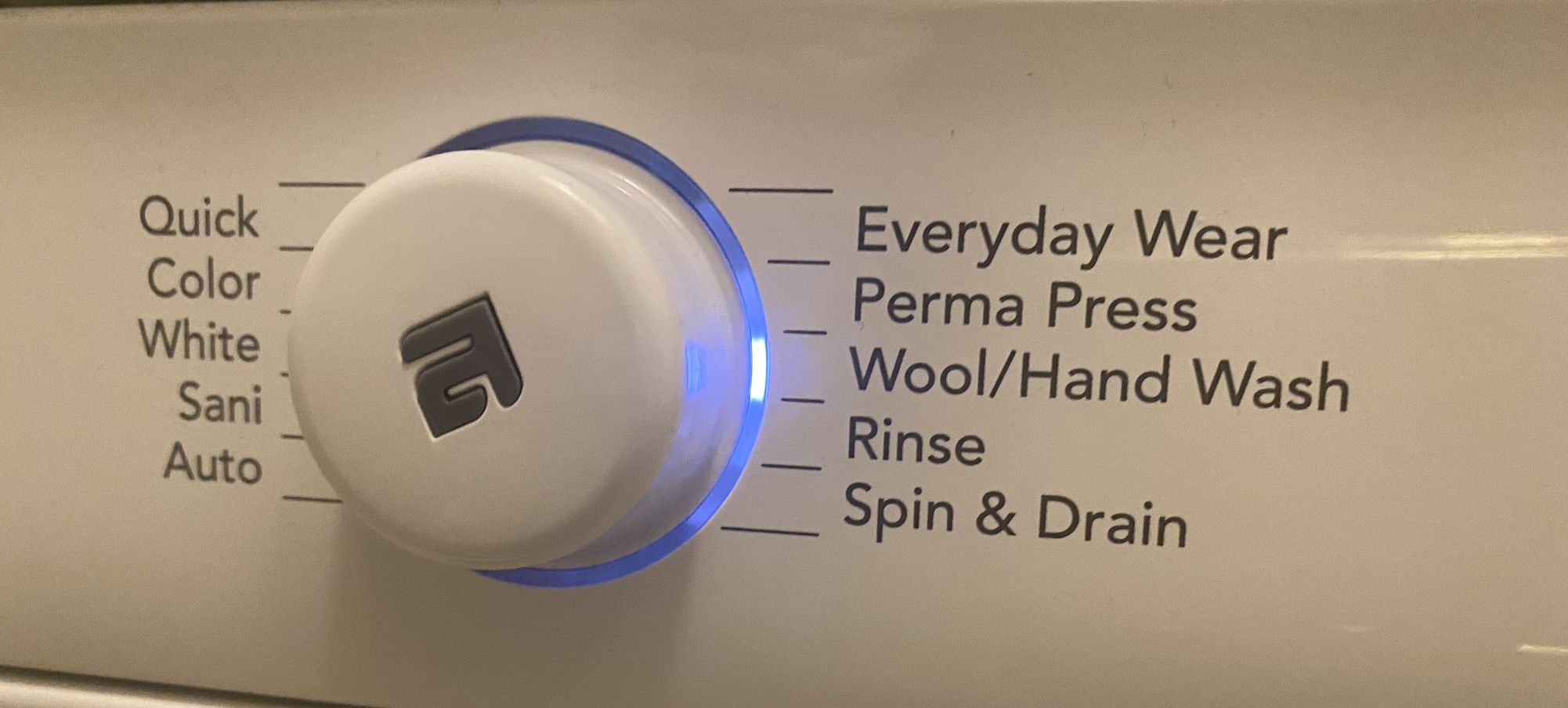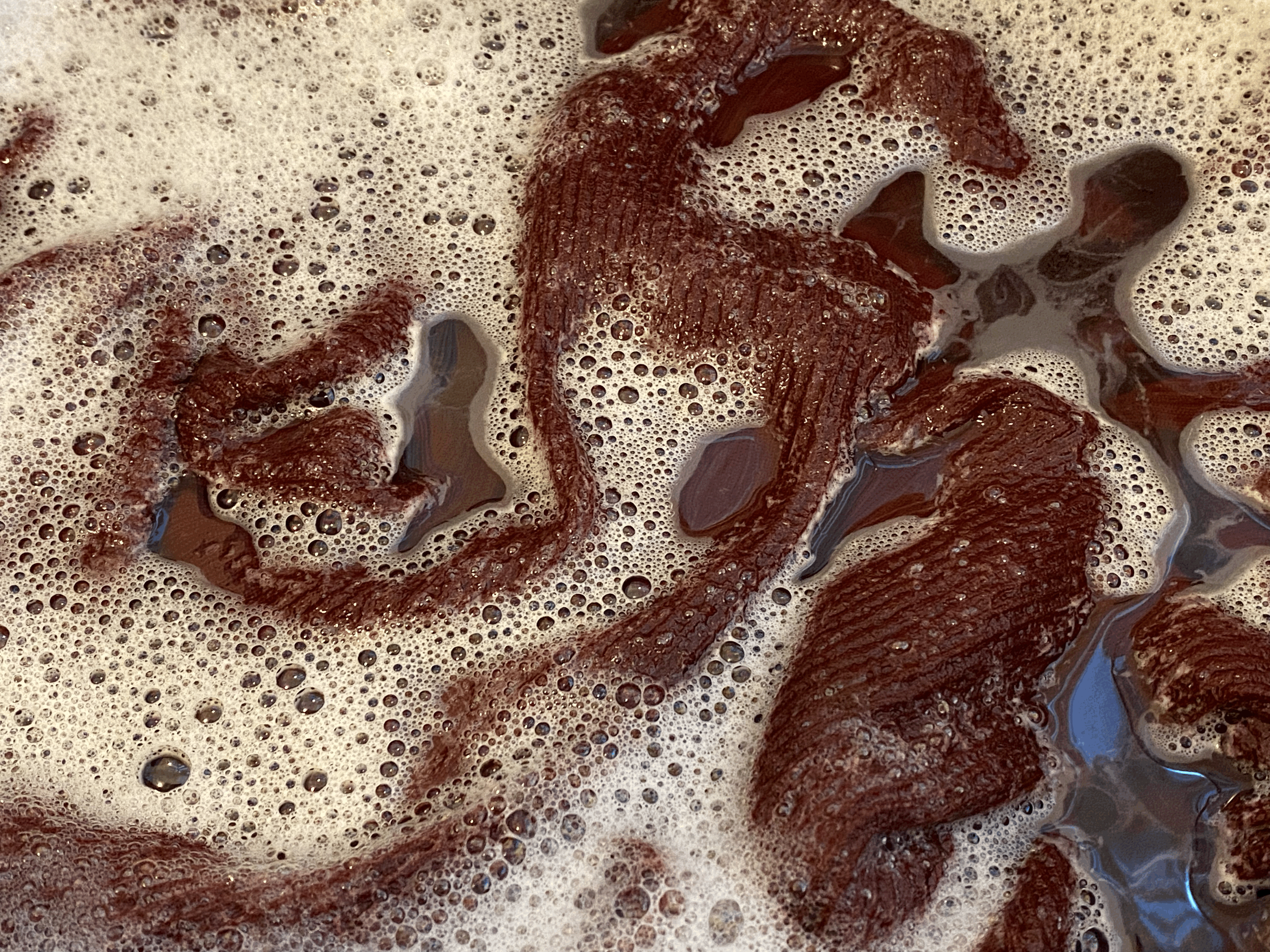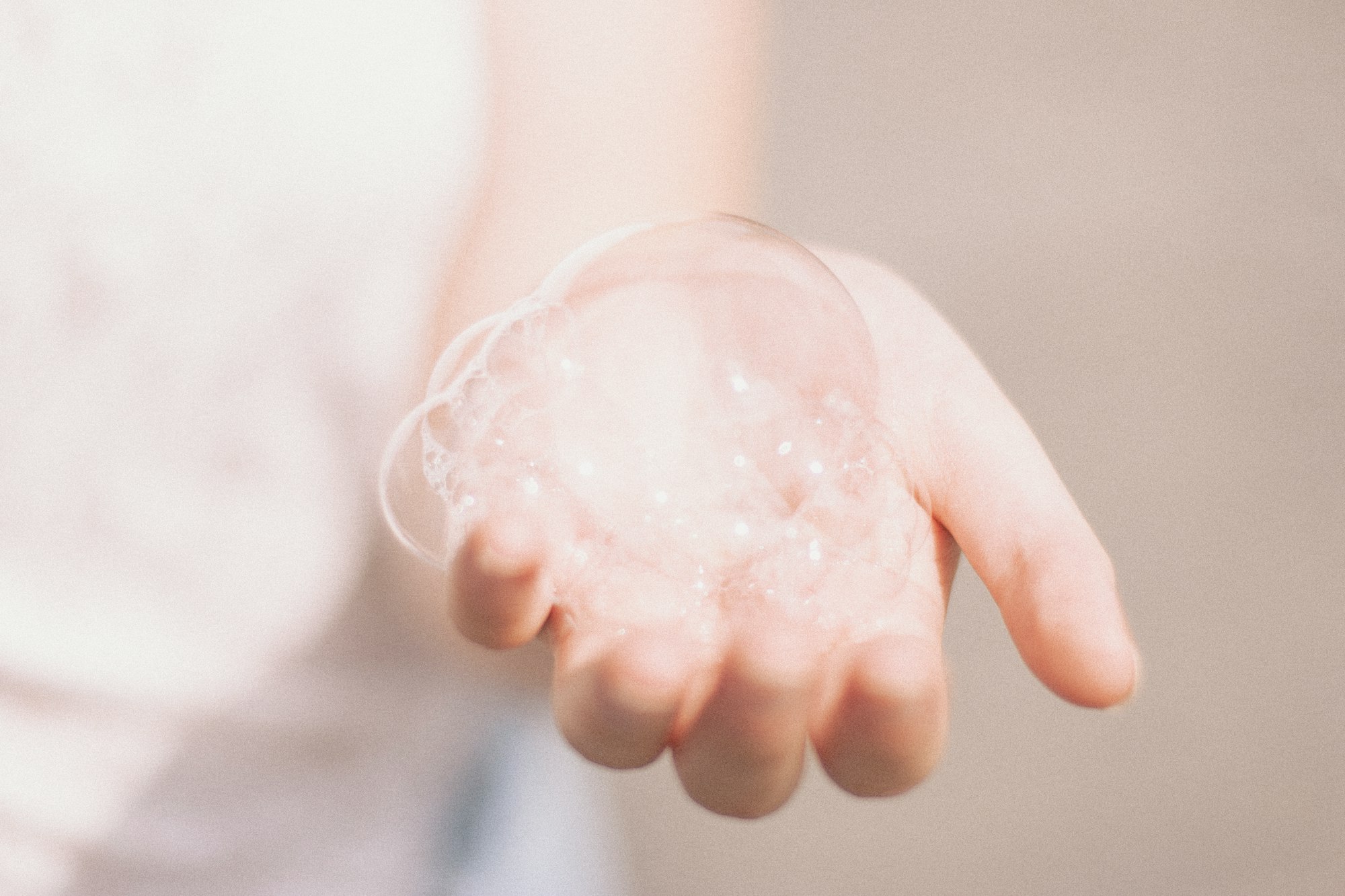Debunking the Dunk: On Washing Wool

Hello wool friends, and happy April!
As this project marches boldly into its second year, I'm making a few changes to better serve the overall mission. The free Weekly Shorts email will be replaced with a monthly email covering a juicy wool topic for everyone. The rest of the month is reserved for deeper wool geekery with Foundation Flock members.
As always, I am grateful for your support.
The Big Dunk
Few things are as satisfying as giving woolens a good wash. They don't need it very often, which may be why their cleaning feels like such an occasion.
There's something about this semiannual baptism I find profoundly fulfilling. Gently nudging a beloved item into warm soapy water, tapping it to and fro with your fingertips as if it were fresh focaccia dough ready for the oven, smelling the soap mingling with that vague whiff of protein fiber, the entire process is a sensual meditation.

Beating the Bias
One of the alleged weaknesses of wool—which marketers of synthetics like to exploit—is that it is hard to care for. It's fussy and demanding, they say. Wool will self-destruct the minute it hits water, they cry. You're much better off wearing plastic fluff that you can nuke in the washer and dryer—and you'll need to, often, because it's plastic.
So let's review the basics, both for our own edification and so we can better help disspel the myth to others about wool and washing.
Read the Label
How often something requires washing depends primarily on what's in it. Also, things like workout clothes or underwear will require more frequent washing, no matter what they're made of. But generally speaking, here's the lowdown.
Synthetic fibers need to be washed frequently, sometimes even after one wear. This is because they don't breathe and are prone to generating static electricity. The fibers trap sweat, odor, and dirt that can only be removed through a ride in the washing machine, and often at a high temperature.
Cotton clothes should be washed after two to three wears.
The same goes for clothing with cellulosic fiber content—by which I mean viscose rayon, bamboo, eucalyptus, or Tencel. Just remember that if the garment hasn't yet been washed, there may be some shrinkage the first time around.
With wool and other protein fibers (mohair, cashmere, etc.), our washing timeline opens up considerably. For most of my woolens, I like to do a Great Wash twice a year: at the beginning of spring, and the beginning of autumn. The wash is as much for cleanliness as it is a ceremonial maypole dance to honor the changing of the seasons.
If heavier woolens are being put away until fall, it's especially important that they get a good cleaning first. Moths are drawn to any signs that a human has worn and loved a wool garment. Sweat, dirt, even microscopic cookie crumbs act as a very loud come-hither for any moth. Don't tempt them.
When it's time for the big dunk, we have two choices: do it by hand, or let a machine have the honor.
By Machine

Most machine-washable wool clothing will be perfectly safe in any newer washing machine with a wool/handwash setting—especially if it's a front-loading machine where the drum lifts and drops the clothes into the water like a tiny ferris wheel. Top-loaders function more like a constantly sloshing jacuzzi.
If you're washing more than one thing, it's a good idea to turn your laundry inside out so that abrasion won't damage the pretty side of your garments. For extra protection, you can also put your items inside a garment bag before putting them in the washing machine.
Then simply use the gentlest setting your machine offers, with a temperature no hotter than lukewarm. Anything above 104ºF (40ºC) should be at your own risk.
I should note that the fancy wool setting may not always be foolproof for things marked dryclean-only that you'd otherwise wash by hand. I once tossed my Allbirds Merino sweater into a fancy front-loader on the wool setting, and what emerged was a good two inches shorter than what had gone in. It was a sobering reminder that washing by hand is usually the safest bet.
By Hand

Handwashing techniques may differ but the fundamental protocol is the same. Fill a sink with lukewarm water, add soap (keep reading for more on this), and give it a good swish until it's evenly distributed. Then drop your garment into the soapy water, tap until it's fully submerged, and walk away. Let it relax in its bath for at least 10 minutes, longer if you wish.
When you're ready, gather up the fabric between your hands and press out as much water as you can. Wool is weaker when wet, so go easy on it. No wringing or twisting.
If you're using a wool wash that requires rinsing, fill the sink with the same temperature water as you just used for the wash. You want to avoid any temperature shock that could make the fibers retreat in fear. Then lower your bundle back into the water, tap, swish, and gently squeeze until you've gotten out any remaining soap. If the water is still bubbly, you may need to repeat this twice, but it's really no big deal.
Drying
Heat and abrasion are never a good idea with wool, and you can't always trust dryers to run cool. As a rule, I never, ever put woolens into the dryer, even if the label claims I can.
Instead, gather your garment from the sink and give it one last squeeze. Then set it on your fluffiest towel and nudge it back into shape. Roll up the towel and give it a gentle press. Your goal is to get out some of the water, you're not trying to dry it completely.
Then simply unroll everything, tap the sweater back into shape, and let it dry. You may have a fancier setup, but I just transfer the sweater-laden towel to the top of my wooden drying rack. Smaller things like socks and hats can just go straight on the rack.
Set your rack away from heat or direct sunlight, both of which may harm the fibers.

On the Subject of Soaps
Here's what I say to any nervous first-time washer: In terms of soap, just don't use anything you wouldn't use on your own hair. No harsh detergents, no stain removers, and absolutely no bleaching agent.
All protein fibers, from wool to human hair, have an outer layer of fine scales that protect and impact the overall appearance of the fiber. Harsh soaps can damage these scales, render fiber brittle and chalky, and strip the fiber of any remaining oil.
Ideally you're looking for a mild soap with as close to a neutral pH as possible. This can be anything from a fancy wool-wash product to a baby shampoo. In a pinch, I've even used a squirt of generic hotel shampoo or Ivory dish soap.
The lanolin-enriched Eucalan formula is my personal favorite, although Kookaburra Wool Wash also works beautifully—and neither of these requires rinsing.
Unicorn Fibre Wash is also excellent, and if you need to wash something really messy like a raw fleece, Unicorn's Power Scour will be your friend.
Then there's Soak, The Laundress Wool and Cashmere Shampoo, Outback Gold, and even Mrs. Meyer's Clean Day Laundry Detergent. The NYC-based yarn store Purl Soho has a sweater soap, as does Twig & Horn. If you're especially fond of lanolin, there's a lanolin-replenishing soap from LANACare you might want to try.
Marie Hoff of Full Circle Wool recommends the greywater-safe detergents from Puretergent. She uses the blue for scouring wool and the yellow for washing finished wool items.
In Between Dunks
Never underestimate the restorative powers of a simple airing. If you're not ready to give your garment a dunk, simply take it with you into the bathroom the next time you enjoy a hot shower. Wool loves a light bit of steam.
In cold weather, you can also refresh your wool through a simple snow bath.
What about Drycleaning?
I am not a fan of drycleaning. We don't spray chemicals on our food before eating it, why should we treat our clothes with chemicals either? Sheep have survived without drycleaning for tens of thousands of years, why shouldn't their sweaters?
My only exception would be for an item with such a tender dye job that any water could cause everything to bleed—things like decorative household objects that don't normally encounter moisture.
The only other time I'd consider drycleaning would be for something priceless and complicated like a Dior gown or Armani suit. Neither of which I happen to own, so I really shouldn't be offering my opinion. Should you happen to have a Dior gown or Armani suit in your possession, do drop me a line and let me know how you like to keep it clean.




